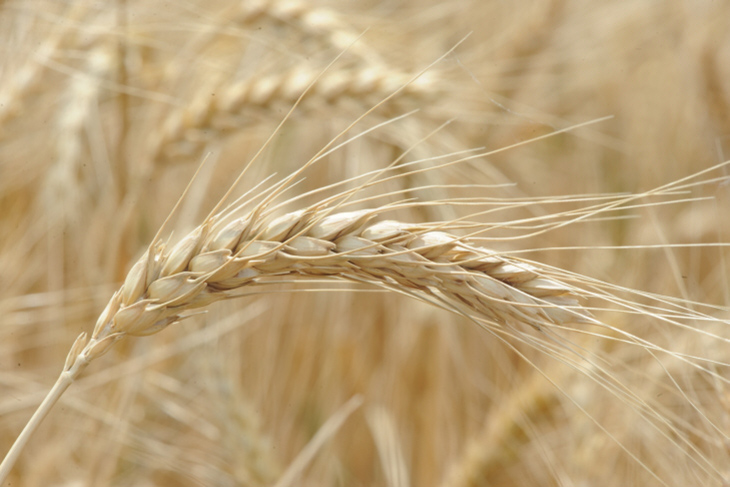
Sign-up now open for agricultural Market Facilitation Program
Wednesday, July 31, 2019
Agricultural producers whose commodities have been directly and negatively affected by what the Trump Administration has designated “unjustified foreign retaliatory tariffs” are eligible for financial assistance under the U.S. Department of Agriculture’s Market Facilitation Program.
Larry Sanders, Oklahoma State University Cooperative Extension agricultural policy specialist, said the MFP is a partial income-replacement response to Chinese tariffs on U.S. agricultural products in that nation’s trade dispute with the United States.
“Producers can sign up for MFP assistance at local Farm Service Agency offices through Dec. 6,” Sanders said. “USDA offered a similar program last year, but this year’s version instituted a few changes in response to input about how the 2018 MFP worked.”
MFP provides payments to producers of qualifying non-specialty and specialty crops, as well as dairy and hogs. A complete listing of qualifying commodities is available through local FSA offices and online at www.farmers.gov/mfp.
“Alfalfa hay, barley, canola, corn, cotton, millet, peanuts, sorghum, soybeans and wheat are among many crops qualifying under the non-specialty designation,” Sanders said. “MFP assistance is based on a single county payment rate multiplied by an operation’s total plantings of MFP-eligible crops in 2019.”
The per-acre payments are not dependent on which of the crops are planted in 2019. A producer’s total payment-eligible acres are the lesser of 2018 plantings and prevented plantings or 2019 planted acres.
“County payment rates range from $15 per acre to $150 per acre, depending on what USDA has determined is the negative effect of the ‘unjustified trade retaliation’ in a specific county,” said Amy Hagerman, OSU Cooperative Extension agricultural and food policy specialist. “Be aware this means a producer in one county may receive a much smaller rate than a producer in an adjacent county.”
Dairy producers who were in business as of June 1, 2019, will receive a per-hundredweight payment based on production history. Hog producers will receive a payment based on the number of live hogs owned on a day selected by the producer between April 1 and May 15 of 2019.
MFP payments are limited to a combined $250,000 for non-specialty crops per person or legal entity. MFP payments also are limited to a combined $250,000 for dairy and hog producers, and for specialty crop producers. No applicant can receive more than $500,000.
Eligible applicants also must have an average adjusted gross income for tax years 2014, 2015 and 2016 of less than $900,000, or 75 percent of the person’s or legal entity’s average AGI for tax years 2014, 2015 and 2016 must have been derived from farming or ranching.
“Qualifying producers also must comply with Highly Erodible Land and Wetland Conservation regulations and have a farm number with FSA,” Hagerman said.
Producers affected by natural disasters that filed prevented planting claims and then planted an MFP-eligible cover crop – with the potential to be harvested or for subsequent use as forage – qualify for a $15 per acre payment. Acreage of cover crops must have been planted by Aug. 1 of this year to be eligible.
“This is good news for producers who filed, especially those hit hard by Oklahoma’s historic levels of flooding this spring,” said Danny Lee, program specialist in the Oklahoma FSA State Office. “However, acres that were never planted in 2019 and a prevented planting claim was not filed are not eligible for an MFP payment.”
MFP payments will be made in up to three dispersals, officially designated as “tranches.” The first payment will be made in mid-to-late August, with the second and third tranches evaluated as market conditions and trade opportunities dictate, according to the USDA website. If conditions warrant, the second and third tranches will be made in November and early January, respectively.
“The first tranche will be comprised of whichever is greater: 50 percent of a producer’s calculated payment or $15 per acre,” Lee said. “Be aware this may reduce potential payments in the second and third tranches.”
The Oklahoma Cooperative Extension Service is one of two state agencies administered by OSU’s Division of Agricultural Sciences and Natural Resources, and is a key part of the university’s state and federally mandated teaching, research and Extension land-grant mission.
MEDIA CONTACT: Donald Stotts | Agricultural Communications Services | 405-744-4079 | donald.stotts@okstate.edu
